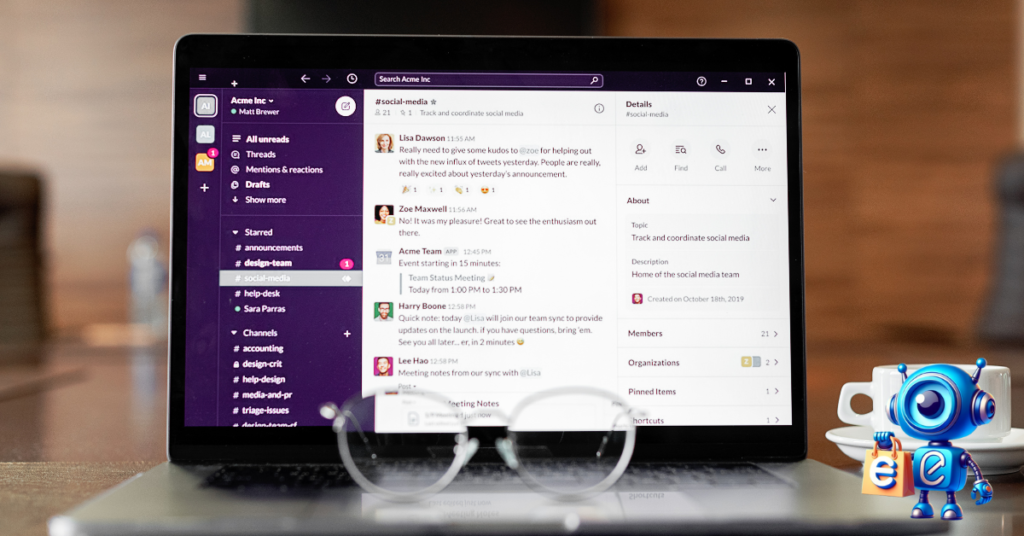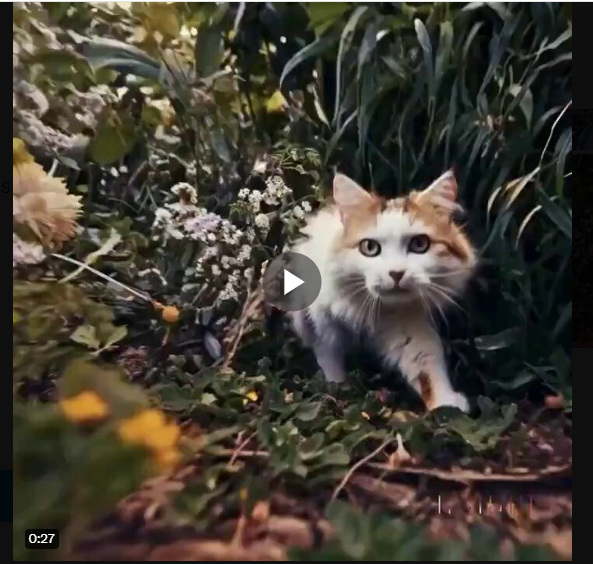Imagine the possibility of transforming a simple text into a captivating video — a concept that might have seemed far-fetched not too long ago. Now, with Sora AI by OpenAI—the same team behind ChatGPT— this futuristic idea will become a reality.
While the exact launch date for Sora remains undisclosed, it is anticipated to arrive sometime in 2024. Here’s everything we know about it so far.
Table of Contents
What is Sora AI?
Sora is an AI model that specializes in generating video content. Unlike traditional video production methods, which require extensive human effort, Sora automates the creation process, allowing users to generate videos from text descriptions.
Sora’s ability to create videos comes from watching various videos on different topics, styles, and genres. It learns how to understand what people want in a video by picking out essential words from their instructions, like who or what the video is about, where and when it happens, and what it feels like. Then, Sora finds the best videos it knows to put together something new that matches these instructions.
Additionally, Sora can change how a video looks and feels according to what people want. This means it can make a video look like a movie, use the classic look of an old film, or follow a specific color theme.
It can adjust the video’s brightness or darkness, colors, and even the angle from which it looks like it was filmed to match the user’s preferences.

Sora can also make different-sized videos and even bring still pictures to life or add new things to existing videos. For example, a picture of a serene beach could be animated with rolling waves and seagulls gliding in the sky or a city skyline video with futuristic buildings and flying cars.
This makes Sora a groundbreaking tool for making videos, giving users endless ways to bring their ideas to life visually.
How Sora AI works
The process begins with the user providing a descriptive text prompt. This prompt can detail a scene, action, or narrative, ranging from simple concepts like “a cat sleeping in a sunny spot” to complex scenarios such as “a futuristic cityscape with flying cars and towering skyscrapers.”
Sora interprets the text to understand the scene’s components, dynamics, and mood. Utilizing advanced machine learning algorithms, it then constructs a video that visualizes the described scenario.

This involves simulating realistic environments, character movements, and interactions that align with the prompt’s context.
Sora’s capability to generate such detailed and contextually accurate videos stems from its training on a broad dataset of video content. By analyzing and learning from countless hours of videos, Sora understands how various elements interact in the real world, enabling it to replicate these dynamics in its creations.
The result is a video that matches the user’s description, rendered with considerable detail and fluidity. These videos can include complex camera movements, expressive characters, and vivid environments generated based on the initial text input.
How Sora AI Can Be Used
Sora’s breakthrough will open up a world of possibilities across various industries and applications. Like text-to-image AI tools, which have simplified image creation for those without technical editing skills, Sora aims to do the same for video creation.
In the following list, we’ll explore some practical ways Sora can be applied and its potential impact across different fields.
- Content creation. Sora AI can generate videos for various purposes, such as social media content, marketing campaigns, educational materials, and entertainment productions.
- Storytelling. Sora AI can assist storytellers, filmmakers, and content creators bring their ideas to life by transforming text-based narratives into visual stories.
- Design and visualization. Sora AI can help designers and visual artists visualize concepts, create prototypes, and explore design ideas through dynamic video representations.
- Education and training. Sora AI can be utilized in educational settings to create engaging and interactive learning materials, tutorials, and simulations for students and professionals.
- Virtual production. Sora AI can streamline the process of creating virtual environments, characters, and scenes for use in virtual reality (VR), augmented reality (AR), and mixed reality (MR) applications.
- Personalization and customization. Sora AI can generate personalized video content tailored to individual preferences, interests, and needs, enhancing user experiences across various platforms and applications.
Potential risks of Sora AI
The introduction of Sora AI holds much promise, but like any groundbreaking technology, it also raises essential considerations regarding potential risks. The full extent of these risks is not yet fully understood. However, they may parallel those observed with text-to-image models. This highlights several vital concerns.
Misinformation
Given Sora AI’s remarkable capability to transform text into lifelike videos, a significant concern arises regarding its potential exploitation by malicious entities to spread false information and deceive people.
Malicious actors could use Sora to make fake videos that look like actual news reports, public statements, or eyewitness accounts, making it hard to tell what’s true and what’s not. These fake videos could be spread all over the internet, including on social media, news websites, and online forums, to fool and trick viewers.
The spreading of this false information could have serious consequences, such as decreasing people’s trust in real sources of information, changing how we talk about important issues, and even affecting what people believe about society and politics. Plus, because stuff spreads so fast online, fake videos made with Sora AI could reach many people and have a significant impact.
Privacy concerns
Sora AI’s ability to create personalized video content tailored to individual preferences and interests raises significant concerns about privacy rights and data security. As technology advances, there’s growing concern about how personal data could be exploited or manipulated for harmful purposes.
For example, if Sora AI is misused, it could produce videos containing profoundly personal or sensitive information without permission, threatening individuals’ privacy and control over their information. Moreover, there’s a risk of creating deceptive or invasive content, such as fake videos that falsely attribute statements or actions to people, damaging reputations, or legal problems.
Developers and policymakers must take proactive steps to address these concerns. This includes implementing strong privacy measures, setting clear rules for how data is handled and used responsibly, and giving users more control over their personal information.
By prioritizing privacy and data security, they can reduce the risks associated with Sora AI’s personalized video creation and ensure people’s privacy rights are respected online.
Bias and ethical implications
Bias in AI systems, like Sora AI, is a significant concern that needs careful handling. It can come from various sources, like the data used for training or the instructions given to the model. This bias might lead to unfair treatment or reinforce stereotypes, worsening existing inequalities.
For example, suppose the data used to teach Sora AI mostly shows certain groups or situations. In that case, the model might learn and repeat those biases, resulting in inaccurate or one-sided videos. Also, if users give biased instructions, the videos might reflect those biases.
Besides bias, broader ethical issues exist, like how Sora AI might be misused to create misleading or harmful content. This could exploit people or sway public opinion in negative ways.
Read Also:
- Running Ads With AI: Everything You Need To Know
- How AI Newsletter Creation Changing The Email Marketing
- How To Supercharge Google Ads With AI For Conversion
- Best AI for Shopify: A Comprehensive Guide
- How To Create Instagram Posts With AI
Impact on creative industries
The rise of Sora AI brings both opportunities and concerns for the creative sector. While it offers new ways to create and express ideas, there’s also concern about how it might affect traditional creative processes and professionals.
One worry is that Sora AI’s ability to make videos quickly and easily could flood the market with automated content. This flood of readily available material might overshadow the work of human creators, making it harder for them to stand out and make a living.
There’s also a fear that if AI-generated content becomes widespread, it could make people think less of human creators’ original, handmade work, reducing the respect and pay given to human creators.
However, Sora AI also opens doors for collaboration and innovation in creative fields. Human creators can expand their abilities and explore new creative ideas using AI tools and their skills.
How to access Sora AI
Sora is currently exclusively accessible to a few chosen creators and several security specialists. The “red team” researchers are experts who identify potential issues with the model.
For instance, they actively generate content to assess and address risks highlighted in prior sections. This proactive approach allows OpenAI to mitigate issues before making Sora available to the broader public.
Conclusion
OpenAI’s journey began with a focus on text-based AI models, such as GPT (Generative Pre-trained Transformer), which excel in understanding and generating human-like text. Now, OpenAI is expanding its horizons into video synthesis, mirroring its earlier successes in text generation.
With initiatives like Sora AI, OpenAI explores how AI can interpret and produce videos based on textual input. This shift highlights OpenAI’s commitment to pushing the boundaries of AI technology across different mediums, unlocking new possibilities for creativity and innovation in artificial intelligence.

